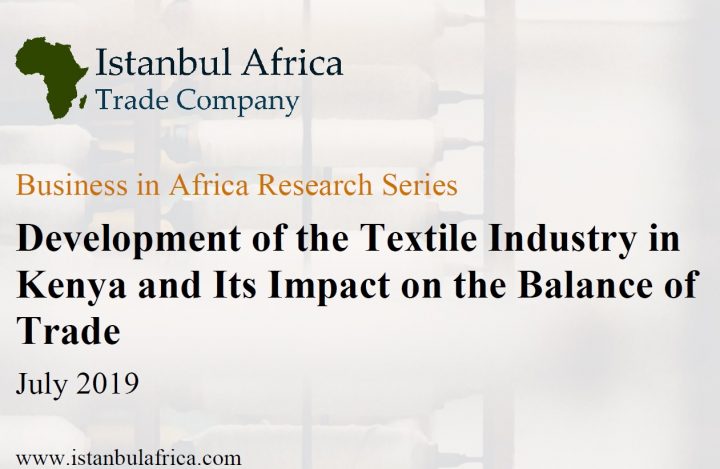Development of the textile industry in Kenya improved the balance of trade by increasing textile exports. Moreover, the global textile industry exhibits quick and significant reactions to the changes in the competitive advantages of countries. The increased competitive advantage of Kenya following the enaction of the African Growth and Opportunity Act in 2000 had a significant impact on the textile exports.
This paper combined the review of past studies on three interconnected topics: the role of the textile industry in economic development, the causal relationship between industrialization and development of the textile industry in Kenya and the rest of the world. The literature review suggests that the textile industry has been an early step in industrialization and export diversification. Moreover, the export diversification and expansion in manufactured products have a positive impact on increasing exports. The past studies on the development of the textile industry in Kenya and major Asian countries support the above inferences.
Secondly, our empirical analysis reinforces the conclusions of the paper. The exports of knitted or crocheted textile products jumped from $4M in 2000 to $28.6M in 2002. The rate of exports growth was maintained at $90.6M in 2005 and $140.9 in 2010. Regression analysis between the value added in the textile industry and exports of knitted or crocheted textile products support the inferences from the literature review regarding industrialization and exports. The growth of the value added in the textile industry coincides with the increase in exports, and they are highly correlated.
Finally, our data analysis exhibits that the textile exports reacted more rapidly to the enaction of AGOA than the value added in the textile industry. One possible explanation of this pattern can be the investment by foreign companies on assembly type of production. The assembly type of production might have a lagged impact on the value added in the industry.
Considering the discussions in the past studies and conclusions of our paper, we offer the following recommendations for sustainable growth of the textile industry in Kenya:
• Implementation of export-led trade policies with clear objectives and incentives.
• Further negotiations for Free Trade Agreements with textile-importing countries to attract foreign investments and boost exports.
• Development of all processes of the textile value chain with better coordination among key stakeholders, such as cotton farmers, raw material processors, cloth manufacturers, designers and the government.
• Infrastructure investments to lower the costs and increase reliability.
• Provision of training programmes to increase labour productivity.
The empirical analysis in this paper has potential limitations. Although we found a high R-squared in the regression analysis, the sample size is small, and we only analyzed one country. Hence, the analytical results of the sample data might not be representative of a wider population. Secondly, we decided to include only knitted or crocheted textile products as a measure of textile exports processed by the domestic industry. This approach might be incomplete or inadequate in measuring the real output and exports of the domestic textile industry. Finally, the development experience of Asian countries through export-led textile industrialization might not hold for Kenya and other Sub-Saharan African countries due to the changing global trends, dynamic business environment and unique characteristics of countries. Notably, inadequate infrastructure and macroeconomic instability in the Sub-Saharan African countries can hinder the development of the textile industry.
We identified two areas for further research. Firstly, the development of the industry across the value chain is needed to be analyzed with sector-specific data. Kenya National Bureau of Statistics, regional development agencies and industry associations might have detailed data showing the value added at each step of the textile manufacturing industry. Hence, the development of the industry and spillover effects can be identified more precisely, and the results might be more insightful. Secondly, this study can be applied to other Sub-Saharan African countries to check the validity of our conclusions. The focused countries should be evaluated with their unique characteristics, such as development level of infrastructure, political stability and human development level. Further research in these fields might complement our study with more insightful sector-specific results and increased validity of our conclusions across several countries.


